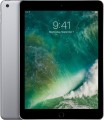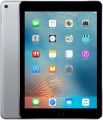Brightness
The maximum brightness in nits provided by the tablet screen.
The brighter the display, the more readable the picture remains on it under intense ambient light. Also, high brightness is important for the correct display of HDR content. However, a large margin for this indicator affects the cost and power consumption of the screen. Manufacturers can specify standard, maximum, and peak brightness values. At the same time, an equal sign cannot be put between the maximum and peak brightness. The first indicates the ability of the screen to produce the specified brightness over its entire area, while the peak one - in a limited area and for a short time (mainly for HDR content).
CPU
The model name of the processor installed in the tablet.
The processor is the “heart” of the device. It is he who is responsible for performing all the computing operations necessary for the normal operation of the tablet, and largely determines the overall performance. Knowing the name of a specific processor model, you can easily find detailed information on it, incl. and comparison with other models.
The most popular chips these days are from
Qualcomm(in particular, the top solutions
Snapdragon 800 series and
Snapdragon 8 series),
MediaTek(budget and “mid-range”
MediaTek Helio processors and the line of advanced
MediaTek Dimensity chipsets with 5G support), and among Windows tablets
Intel processors (mainly the
Intel Core family) are often found. Quite a rarity are branded
Kirin processors from Huawei and Honor.
CPU speed
The clock speed of the processor installed in the tablet is actually the maximum number of operations performed by one processor core per second. This indicator is important for the speed of the system, but a high clock frequency in itself does not guarantee speed. The actual speed of the processor also depends on its architecture, the number of cores and many other features, and the overall speed of the device also depends on the amount of “RAM”, the installed OS, etc. Therefore, situations are not uncommon when
powerful advanced tablets have a lower CPU frequency than more modest models.
Graphics card
Model of the graphics card installed in the tablet. The graphics card in such devices is not a separate device, but part of the processor; however, she still has a clear specialization and is responsible for graphics.
Accordingly, the graphics capabilities of the tablet directly depend on the characteristics of the video accelerator. Theoretically, knowing the name, you can find detailed specifications of a graphics card, reviews, test results and other information and evaluate how it suits you. At the same time, in most cases there is no need to delve into such details — all system components, including the graphics card, are usually selected in such a way as to correspond to the general class of the tablet and the capabilities necessary for this class.
AnTuTu Benchmark
The result shown by a device when undergoing a performance test (benchmark) in the AnTuTu Benchmark.
AnTuTu Benchmark is a comprehensive test designed specifically for mobile devices, primarily smartphones and tablets. It evaluates the performance of the processor, memory, graphics, and input/output systems, providing a clear impression of the system's capabilities. The better the performance, the higher the score. According to AnTuTu, top models are those that score more than 500,000 points.
As with any benchmark, this test does not provide absolute precision; for more details on measurement inaccuracies, see the "3DMark Gamer's Benchmark" section.
3DMark Gamer's Benchmark
The result shown by the device when passing the performance test (benchmark) 3DMark Gamer's Benchmark.
3DMark is a series of benchmarks originally designed to test the graphics performance of a device; later, these tests were supplemented by checking the capabilities of the processor. Testing is carried out primarily in terms of performance in games (in fact, the benchmark itself is described as “a game without the ability to influence the process”), however, given that modern games can have very high requirements, 3DMark is a fairly visual tool for assessing the overall performance of the system . And since the latest versions of the test are made cross-platform, it also makes it possible to compare devices under different operating systems and even different classes (for example, smartphones with tablets). The more points this or that model received on this test, the more performant it is.
It is worth noting that the results of any benchmark are usually quite approximate, because. they depend on many factors that are not directly related to the system — from the load of the device with third-party programs and ending with the air temperature during testing. The error due to these factors is usually on the order of 5-7 %; therefore, it is possible to speak of a significant difference between the two models only if the difference in their indicators goes beyond this error.
Geekbench
The result shown by the device when passing the performance test (benchmark) Geekbench.
Geekbench is a specialized benchmark designed for CPUs. Since version 4.0, the test has also been applied to graphics accelerators; towards the end of 2019, the benchmark was released under the number "5". The characteristics of portable gadgets usually provide data specifically for the CPU. During testing, Geekbench simulates the workloads that occur when performing real-world tasks, and takes into account both the capabilities of a single core and the efficiency of multiple cores running simultaneously. Thanks to this, the final results characterize well the capabilities of the processor in everyday use. In addition, the test is cross-platform and allows you to compare the CPUs of different devices (smartphones, tablets, laptops, PCs). The help information only lists the multi-core test values for CPU.
Main
— The number of lenses. The characteristics of the main (rear) camera of the tablet are represented primarily by the number of modules, which in most cases are 1, but there are also
tablets with a dual camera.
— Resolution. The second important factor of the camera is the number of megapixels. Many really believe that the more MP, the better the quality of filming. However, this is not entirely true: only the maximum resolution of the resulting images depends on the resolution of the matrix, and their quality is determined by many other parameters. However a large sensor resolution may be a sign of an advanced camera, but this is not necessary — two "eyes" with the same number of megapixels can radically differ in the quality of shooting.
Rear cameras in tablets may well be used for photo and video shooting; therefore, they have
cameras of 8 MP,
10 MP and even higher (
12 and
13 MP).
— Autofocus. For focus in such cameras, a movable lens system controlled by automation is responsible. It takes some time for the automation to work, and the lenses themselves turn out to be more complicated and more expensive than optics with a fixed focus (fixed lenses that are initially set to a large range of distances). However, the quality of the pictures is disproportionate
...ly higher than that of cameras without autofocus, and the systems themselves are constantly being improved, and their response time is increasingly approaching instantaneous.
— Flash. Flash significantly expands the capabilities of the camera. First of all, it allows you to shoot in low light conditions; in this case, the backlight, usually, can also be used in the constant glow mode — for video shooting. The second situation where a flash can come in handy is backlighting when the subject is in shadow. In addition, in many tablets, the flash LED can also be used as a regular flashlight, without a camera.Camera (front)
Resolution
of the front camera of the tablet.
There is an opinion that more megapixels means better quality of filming. However, this is not entirely true: only the maximum resolution of the resulting images depends on the resolution of the matrix, and their quality is determined by many other parameters. However a large sensor resolution may be a sign of an advanced camera, but this is not necessary — two "eyes" with the same number of megapixels can radically differ in the quality of shooting.
The main purpose of frontcameras in tablets is video communication, and for it high resolution is not critical. Therefore, the number of megapixels in such cameras is noticeably lower than in rear cameras — for example, 2 MP considered an acceptable value, 5 MP is not bad, 7 MP and 8 MP is good, 12MP — excellent.

